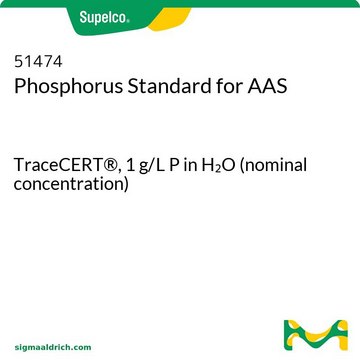33578
Microcystin RR-YR-LR solution
5 μg/mL in methanol (each), analytical standard
Zaloguj sięWyświetlanie cen organizacyjnych i kontraktowych
About This Item
Polecane produkty
klasa czystości
analytical standard
okres trwałości
limited shelf life, expiry date on the label
stężenie
5 μg/mL in methanol (each)
metody
HPLC: suitable
gas chromatography (GC): suitable
Format
multi-component solution
temp. przechowywania
−20°C
Zastosowanie
Refer to the product′s Certificate of Analysis for more information on a suitable instrument technique. Contact Technical Service for further support.
Ta strona może zawierać tekst przetłumaczony maszynowo.
Hasło ostrzegawcze
Danger
Zwroty wskazujące rodzaj zagrożenia
Zwroty wskazujące środki ostrożności
Klasyfikacja zagrożeń
Acute Tox. 3 Dermal - Acute Tox. 3 Inhalation - Acute Tox. 3 Oral - Flam. Liq. 2 - STOT SE 1
Organy docelowe
Eyes
Kod klasy składowania
3 - Flammable liquids
Klasa zagrożenia wodnego (WGK)
WGK 2
Temperatura zapłonu (°F)
51.8 °F - closed cup
Temperatura zapłonu (°C)
11 °C - closed cup
Środki ochrony indywidualnej
Eyeshields, Faceshields, Gloves
Wybierz jedną z najnowszych wersji:
Masz już ten produkt?
Dokumenty związane z niedawno zakupionymi produktami zostały zamieszczone w Bibliotece dokumentów.
Klienci oglądali również te produkty
Michelle D Onofrio et al.
Toxins, 12(5) (2020-05-18)
Many detection methods for phycotoxins, bioactive compounds produced by harmful algae, focus on one compound or a class of related compounds. Multiple harmful algal species often co-occur in the environment, however, emphasizing the need to analyze for the presence of
Tigist W Zewde et al.
Toxicon : official journal of the International Society on Toxinology, 153, 85-95 (2018-09-02)
Herein, we report the presence and concentrations of three most common variants of microcystin (MC-LR, -RR and -YR) in the liver and muscle tissues of wild Nile Tilapia (Oreochromis niloticus), Common Carp (Cyprinus carpio) and African Sharp Tooth Catfish (Clarias
Nasz zespół naukowców ma doświadczenie we wszystkich obszarach badań, w tym w naukach przyrodniczych, materiałoznawstwie, syntezie chemicznej, chromatografii, analityce i wielu innych dziedzinach.
Skontaktuj się z zespołem ds. pomocy technicznej












